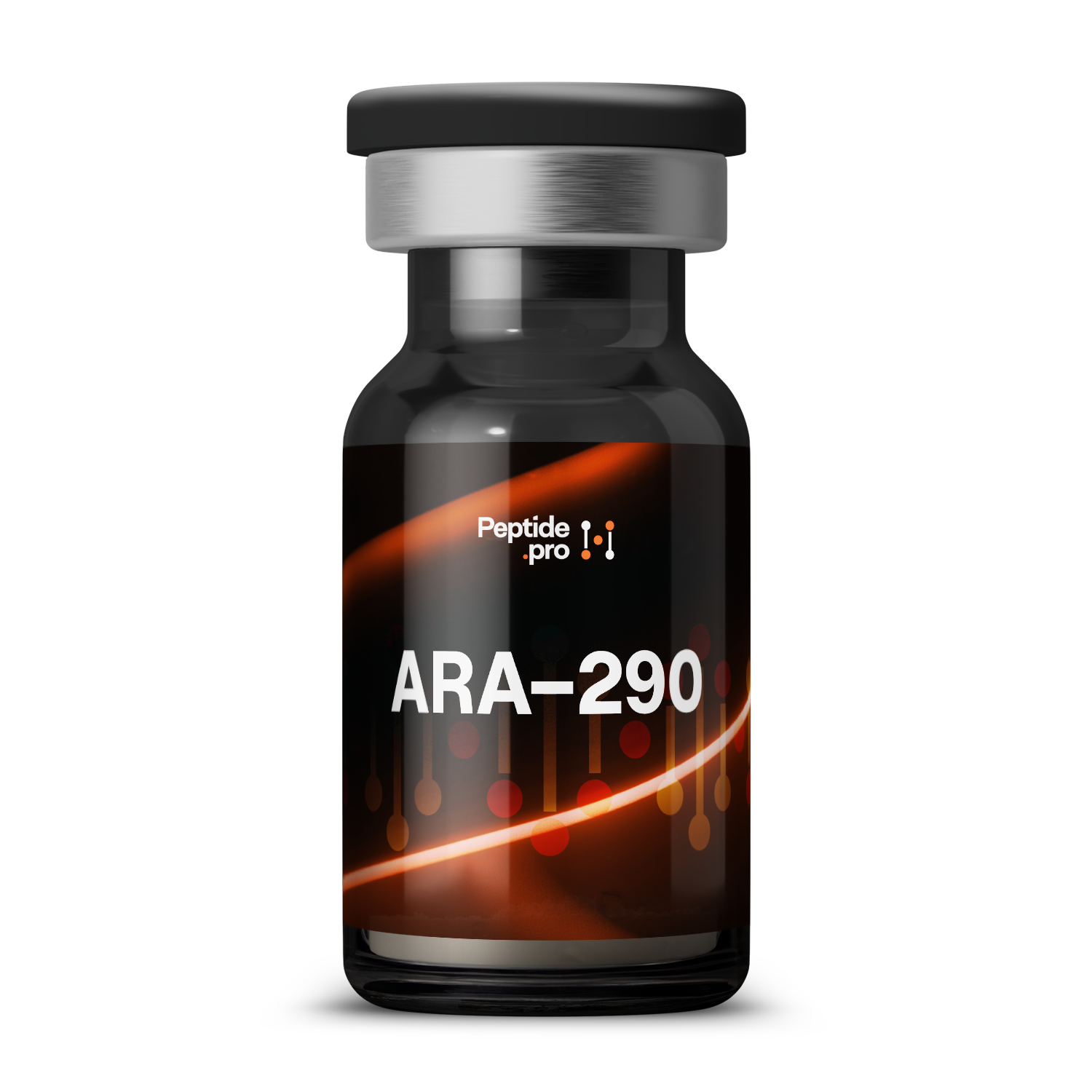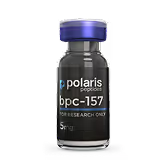ARA-290
ARA-290 is a small man-made peptide based on a part of the hormone erythropoietin, designed to protect and repair damaged tissues without affecting red-blood-cell production. In early human studies, it reduced nerve pain and inflammation, particularly in diabetic neuropathy, and showed signs of improving tissue healing.
Compound Overview
About the product
ARA-290 corresponds to the helix B segment of erythropoietin with an N-terminal pyroglutamate modification for enhanced stability. No non-natural amino acids are present beyond this modification. It is synthesized by Fmoc solid-phase peptide synthesis (building each amino acid sequentially on a resin). Purity exceeds 95 percent as confirmed by high-performance liquid chromatography and mass spectrometry.
ARA-290 binds selectively to the innate repair receptor (a heterodimer of erythropoietin receptor and CD131), activating anti-inflammatory and tissue-protective signaling pathways. It does not engage the classical erythropoietic receptor or increase hemoglobin levels. The peptide reduces pro-inflammatory cytokine release and supports repair of small nerve fibers. Downstream effects are observed within weeks of once-daily dosing.
The peptide has been evaluated primarily for neuropathic pain relief and inflammatory-disease research. In phase II trials, patients reported reduced pain intensity and improved quality of life. Studies in sarcoidosis demonstrated increased nerve-fiber density and symptom improvement. Further research is exploring its application in other inflammatory and ischemic conditions.
Reported adverse events have been mild and transient, most commonly injection-site discomfort and occasional headache. No significant changes in hemoglobin or hematocrit were observed, confirming lack of erythropoietic activity. Safety during pregnancy, lactation, and with prolonged use beyond 28 days has not been established. Known contraindications include hypersensitivity to peptide components.
ARA-290 is produced by Fmoc solid-phase peptide synthesis, assembling the chain stepwise on a resin support. After cleavage, it is purified by high-performance liquid chromatography to over 95 percent purity. Mass spectrometry confirms correct sequence and molecular weight. Manufacturing follows research-grade peptide compounding standards under good laboratory practice.
ARA-290 is classified for investigational use only and lacks approval from the U.S. FDA, EMA, or other major regulatory bodies for therapeutic application. It cannot be prescribed outside of registered clinical trials. Research institutions may obtain it under investigational new drug (IND) frameworks or equivalents. No commercial formulations are available for patient use.
Clinical studies have administered 300 µg subcutaneously once daily for 28 days. Higher doses up to 0.1 mg/kg have been explored without affecting blood counts. No standardized dosing guidelines exist outside of approved trial protocols. All administration should adhere strictly to investigational study designs.
- Do use only under approved clinical-trial protocols with ethical oversight.
- Do monitor neuropathic symptoms and routine blood counts during treatment.
- Don’t co-administer with erythropoiesis-stimulating agents off-protocol.
- Don’t use in pregnancy, lactation, or active malignancy.
- Q: Does ARA-290 increase red blood cell counts?
- A: No; hemoglobin and hematocrit remain unchanged in clinical trials.
- Q: How soon is pain relief observed?
- A: Many patients report relief within 2–4 weeks of daily dosing.
- Q: Can it be administered orally?
- A: No; only subcutaneous injection has been studied.
For research use only. Not approved for medical use.


